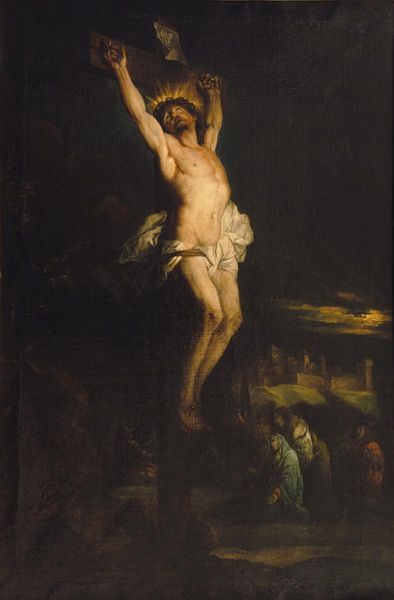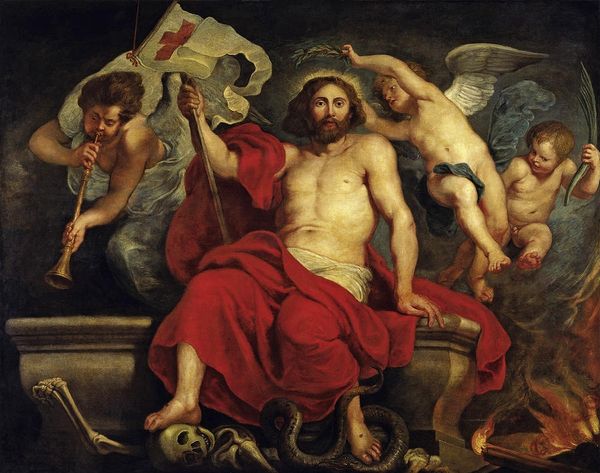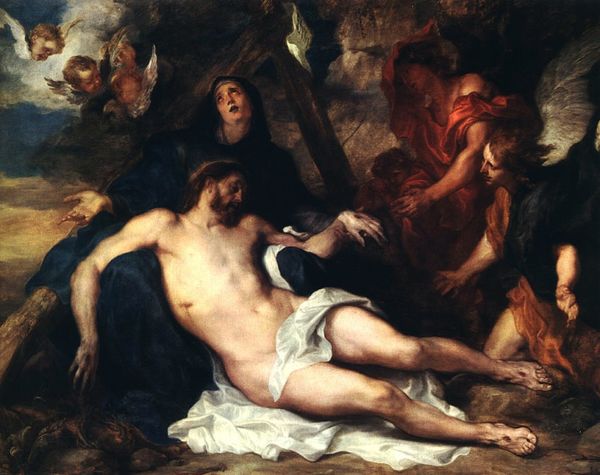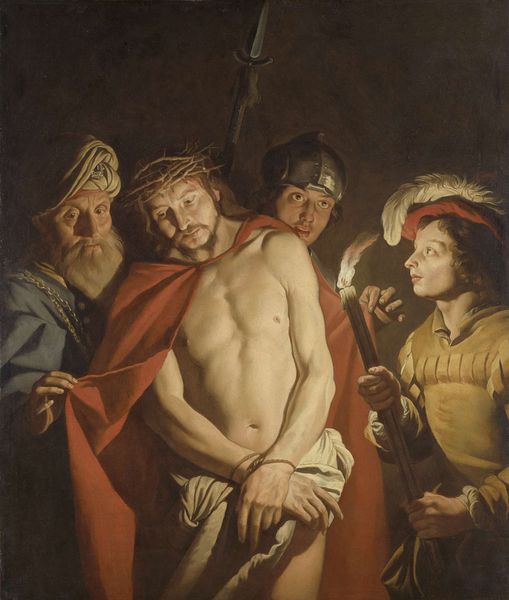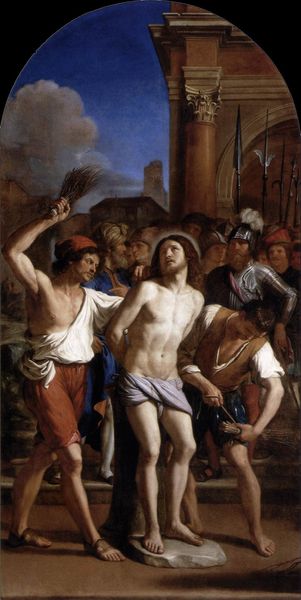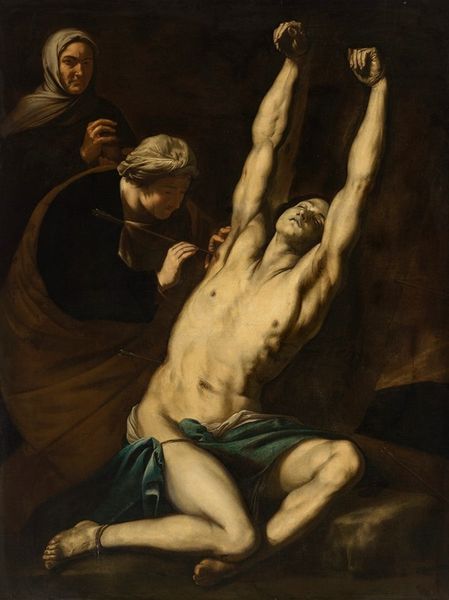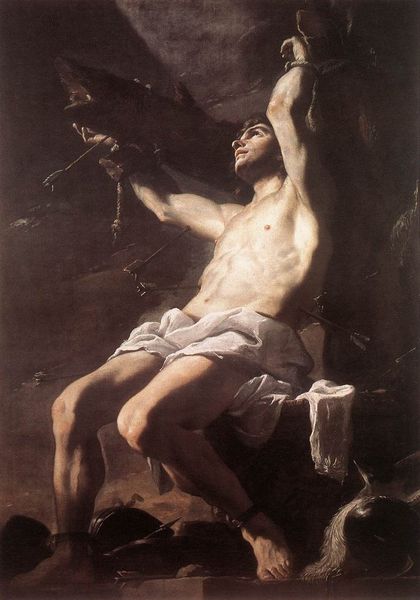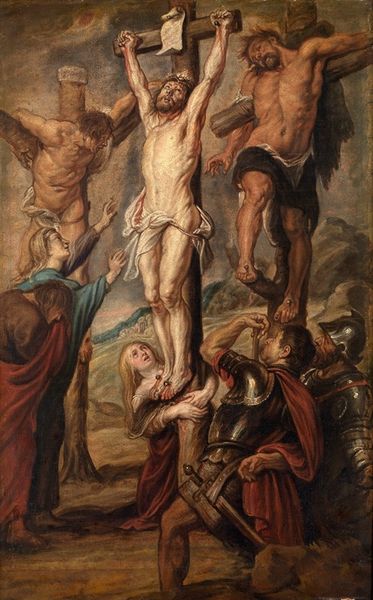
oil-paint
#
allegory
#
baroque
#
oil-paint
#
figuration
#
oil painting
#
history-painting
#
nude
Dimensions: 183 x 155 cm
Copyright: Public domain
Curator: Standing here before Rubens’ “Christ Resurrected,” painted in 1616, one immediately notices the incredible dynamism. The figure literally bursts forth from the darkness, radiating light. Editor: Yes, the baroque drama is undeniable. There’s an almost performative quality to it. But what interests me is how Rubens negotiates the iconography of the resurrection with, let's say, the social expectations for representing the divine. It’s a particularly charged and fraught moment in the 17th century. Curator: Absolutely. The context is crucial. Remember, the Catholic Church was actively countering the Reformation through art. This painting, bathed in its sensuous use of oil paint, wasn't just a depiction but a declaration. Look at the triumphant gesture, the strong body emerging from the tomb—Rubens presents an invigorated, powerful Christ. Editor: And that triumph isn't solely about religious power; it's also about asserting a very specific, idealised masculine form. How might ideas about the body impact concepts of faith and leadership? Curator: It's interesting how Rubens incorporates classicism to that end. The composition recalls antique sculptures, but he imbues the figure with a decidedly fleshy, almost palpable presence that contrasts sharply with the asceticism that some Protestant reformers advocated. This focus moves away from symbolic readings. Editor: Do we consider the angels surrounding Christ bearing witness or collaborators of sorts? How do we read their positions within the piece, understanding gender dynamics in religious paintings from that period? Are they just there to signify holiness, or do they actively partake in that constructed dominance? Curator: It forces a recognition that even sacred themes were sites for enacting specific social power dynamics. Even today, its assertion can elicit intense emotions. The Church had very distinct socio-political desires, but through his painting Rubens delivers on those requests through light, movement, and bodies. Editor: Precisely. By analyzing these historical pieces, we unearth not only their religious contexts but the latent, or sometimes quite blatant, values that continue to shape how we read art, religion, and, more broadly, power, even today. Curator: It reveals a potent visual language that speaks across centuries about faith and those with influence. Editor: An experience of how art echoes and reverberates. Thank you.
Comments
No comments
Be the first to comment and join the conversation on the ultimate creative platform.

